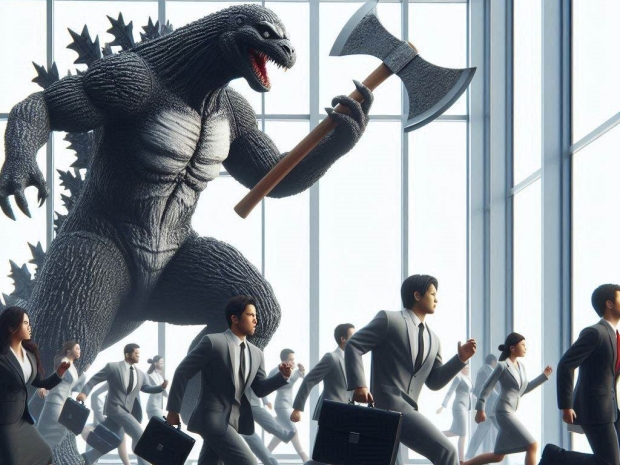Morningstar analyst Brian Colello said that while Intel is doing the proper work to focus on leading-edge chip manufacturing, it appears that many of its customers in various end markets might be leaving Intel behind.
The AI investment frenzy outpaced Intel's expectations. Intel was already losing market share in traditional data centre chips, and the AI boom has only exacerbated this trend, with Nvidia's AI chips gaining momentum.
To make matters worse, Intel is central to America's new industrial policy to counter Chinese competition and bring chip manufacturing back to the US. Federal investment supplements Intel's massive spending on new manufacturing facilities intended for both its own chips and those of external customers, including rivals.
While the cunning plan is that Intel could eventually offer companies like Apple and Nvidia an alternative to Taiwan Semiconductor Manufacturing Company (TSMC), which dominates the production of leading-edge chips, Intel has had to outsource its top chip designs to TSMC, highlighting its struggles.
CEO Pat Gelsinger recently told analysts, “The finish line is within sight,” referring to the company's technology transition. Before the bold rebuilding plan launched in 2021, some investors urged Intel to abandon manufacturing and focus solely on chip design. This move would have left the US without a leading-edge chip manufacturer and cemented TSMC's monopoly.
His Key takeaways for the coming years include:
- This isn't the last of Intel's cost-cutting measures. The current round affects all divisions, but more difficult decisions lie ahead, potentially involving larger projects. Gelsinger compares this to Intel's painful exit from the memory chip business 40 years ago. The significant cost cuts risk eliminating R&D projects that could yield future breakthroughs.
- Congressional scrutiny and criticism of US industrial policy are likely. With $8.5 billion in CHIPS Act subsidies committed to Intel, expect questions about layoffs and cost cuts. Gelsinger insists the subsidies are tied to manufacturing milestones, which he still expects to meet. However, delays in projects like Intel's new megaproject in Ohio could trigger congressional inquiries.
- Calls to split Intel into two publicly traded firms—one for chip design and another for manufacturing—may grow louder. The 2021 turnaround plan created these two business lines, but Intel maintains that both are essential under one roof. Historically, Intel has thrived by integrating design and manufacturing, but investors might push for a split to unlock profits. Such a move, however, would undermine Intel's strategy to regain chip leadership.
There are some bright spots. Intel has shipped 15 million units of its AI PC chips and expects to reach 40 million this year. Its latest AI accelerator, set to compete with Nvidia', will launch later this year and capture some market share in AI data centre chips. While Intel doesn't lead overall, it does possess cutting-edge manufacturing capabilities.
The bold turnaround plan is on track, including efforts to catch up with industry leader TSMC. Intel has advanced its manufacturing process technologies and installed the latest fabrication tools. The company still projects over $15 billion in annual revenue from external chip customers by 2030. A promising sign would be if Intel secures big names like Nvidia or Apple as customers for its chipmaking business.
Intel's strategic importance to the US and other nations provides a cushion. Along with Samsung and TSMC, Intel is one of only three firms capable of leading-edge manufacturing. Intel benefits from Western nations' and customers' desire for a reliable alternative. However, Intel must deliver top-tier manufacturing and prove itself to early customers.




